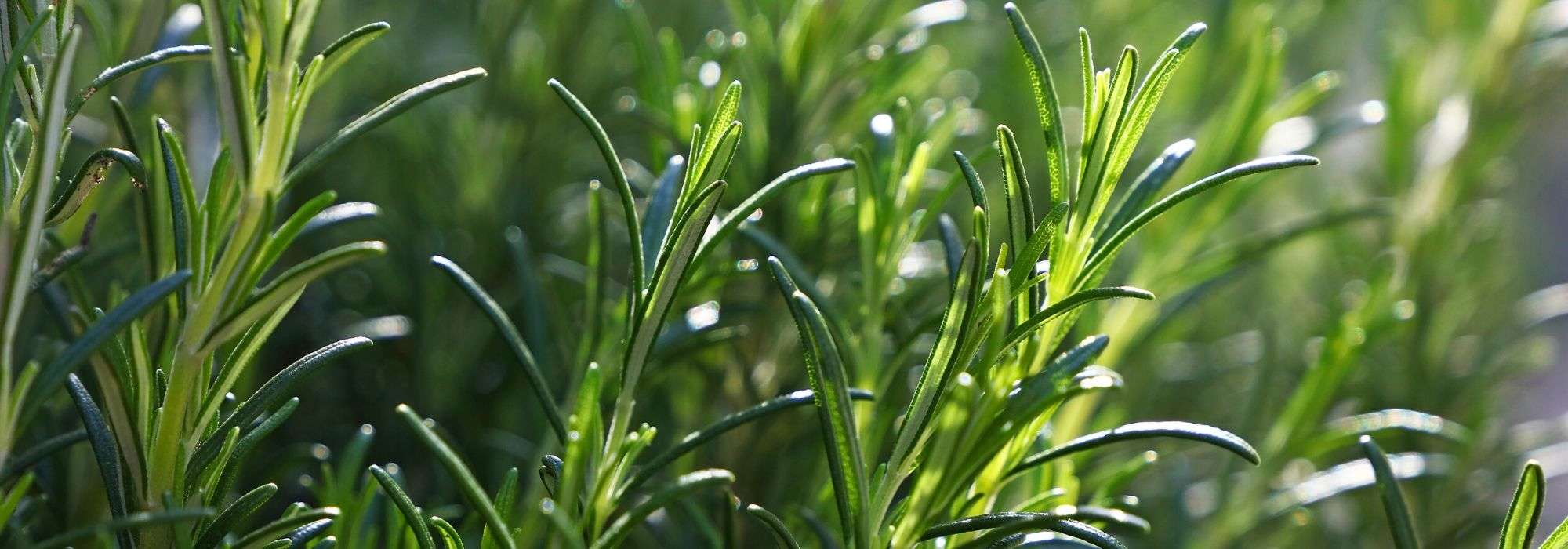
Rosemary: planting, benefits, harvest
Contents
Rosemary in a nutshell
- Rosemary is a beautiful aromatic, culinary, medicinal, and ornamental shrub that evokes the South and sunshine.
- Its highly aromatic evergreen foliage is essential in the kitchen for flavouring grilled dishes, sauces, or infusing teas.
- The lovely flowering occurs in spring north of the Loire, but from the end of winter, or even all year round in the Mediterranean region.
- Hardy and undemanding, perfectly adapted to drought, it is an excellent plant for dry and poor soil.
- In rockeries, borders, small hedges, or pots, in the garden as well as in the vegetable patch, adopt it!
A word from our expert
Rosemary, this beautiful aromatic shrub, is well-known for its culinary, medicinal, and ornamental uses, evoking the warmth of the South and the sun! The highly aromatic leaves of rosemary, like those of thyme, particularly enhance grilled dishes and infuse the garden, home, and kitchen, as well as herbal teas and infusions. This herb also offers numerous benefits for the skin and hair, along with many medicinal properties. In spring, sometimes as early as February in the south of our country, this evergreen bush is adorned with a multitude of small flowers, usually a soft lavender blue.
We particularly cultivate common rosemary (Rosmarinus officinalis) and its many varieties, which are ideal for quickly setting the scene in a dry garden, rockery, or arid slope.
Rather hardy for a Mediterranean plant, rosemary is not afraid of cold, drought, sea spray, or poor soils.
This bush can reach up to 1.5 m in width and, depending on the variety, can serve as both a groundcover for dry, sunny areas and a decorative hedge due to its dense growth.
In rockeries, borders, small hedges, or pots, adopt this shrub that is as beautiful as it is useful!
Description and Botany
Botanical data
- Latin name Rosmarinus
- Family Lamiaceae
- Common name Rosemary, herb of crowns
- Flowering In winter and from summer to autumn depending on the regions
- Height 0 to 1.50 m
- Exposure Sun
- Soil type poor and well-drained
- Hardiness -15°C in well-drained soil
The Rosemary, Rosmarinus in Latin, sometimes called “herb of crowns” or “herb of troubadours,” is a beautiful evergreen aromatic shrub from the Lamiaceae family, like thyme. It grows wild in dry, limestone hills, in scrubland and maquis throughout the Mediterranean basin.
The genus includes two species:
- the common rosemary (Rosmarinus officinalis or “cineole rosemary”) and its numerous varieties,
- the trailing rosemary (Rosmarinus lavandulaceus) or prostrate rosemary, which is a spreading species.
From a woody stump, rosemary forms a fragrant bush 10 to 30 cm high for prostrate and creeping varieties (Rosmarinus ‘Prostratus’) up to 1.50 m wide for Rosmarinus officinalis. Depending on the species and varieties, the stems will be either prostrate or upright and not trailing. The greyish bark flakes off.
The woody, ramified stems bear persistent, edible, and leathery foliage. It consists of small, petiole-less, lanceolate, rigid leaves resembling needles. They have the characteristic of having rolled margins. They measure 2 to 8 cm long and are shiny green on top, cottony and greyish-white underneath.
Highly aromatic, this foliage rich in essential oil exudes a powerful, invigorating, camphoraceous, green scent. Its fragrance also evokes incense, hence its nickname “incensier” in Provençal. Edible, it is essential in cooking to flavour grilled dishes, fish, sauces, and bouquet garni.
In a warm, sunny situation, the entire plant will be fragrant.
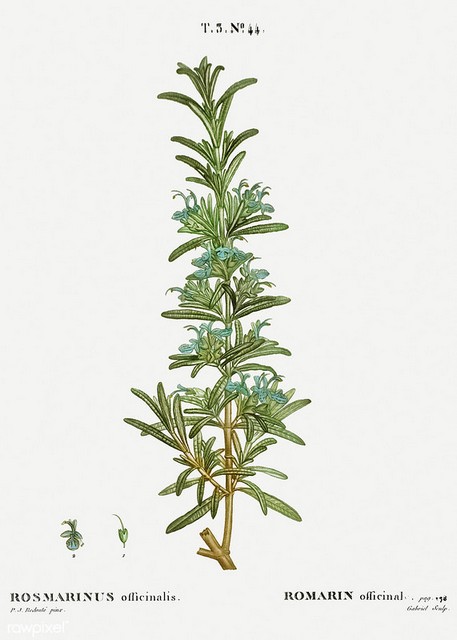
Rosmarinus officinalis – botanical illustration by P.J. Redouté
The azure flowering of rosemary occurs as early as February, sometimes in January, or even all year round in successive waves in the south of our country, generally in March-April in the north of the Loire. Rosemary bears very small flowers gathered in small clusters along the branches. These delicate flowers, typical of the Lamiaceae, open in two lips, with the lower lip of the corolla forming a broad labellum deeply divided. They resemble miniature orchids.
Generally pale blue, sometimes speckled with violet to bluish-violet, they are more rarely white in Rosmarinus officinalis ‘Albiflorus’ or pink.
This fragrant, melliferous, and nectariferous flowering renews continuously, attracting numerous pollinating insects, particularly bees, which produce a highly aromatic honey, as well as certain butterflies.
Naturally growing on arid slopes, rosemary is a plant of arid and rocky soils par excellence! It thrives in full sun and light, even poor, very calcareous, well-drained soils. It is a Mediterranean plant that tolerates cold quite well in very well-drained soil down to -15°C and acclimatises in all our regions. In cold and humid regions, it may start to suffer from -10°C and would prefer to be grown in pots.
In addition to being a staple in the vegetable garden, it integrates easily into all gardens, particularly in a dry garden, in rockeries, as punctuation in a flowerbed, in a border, or as a low hedge.
In addition to its many culinary or therapeutic properties, in ancient Mediterranean regions, it was burned like incense to ward off evil spirits. Meanwhile, the Egyptians placed its branches in the tombs of pharaohs to strengthen their souls.
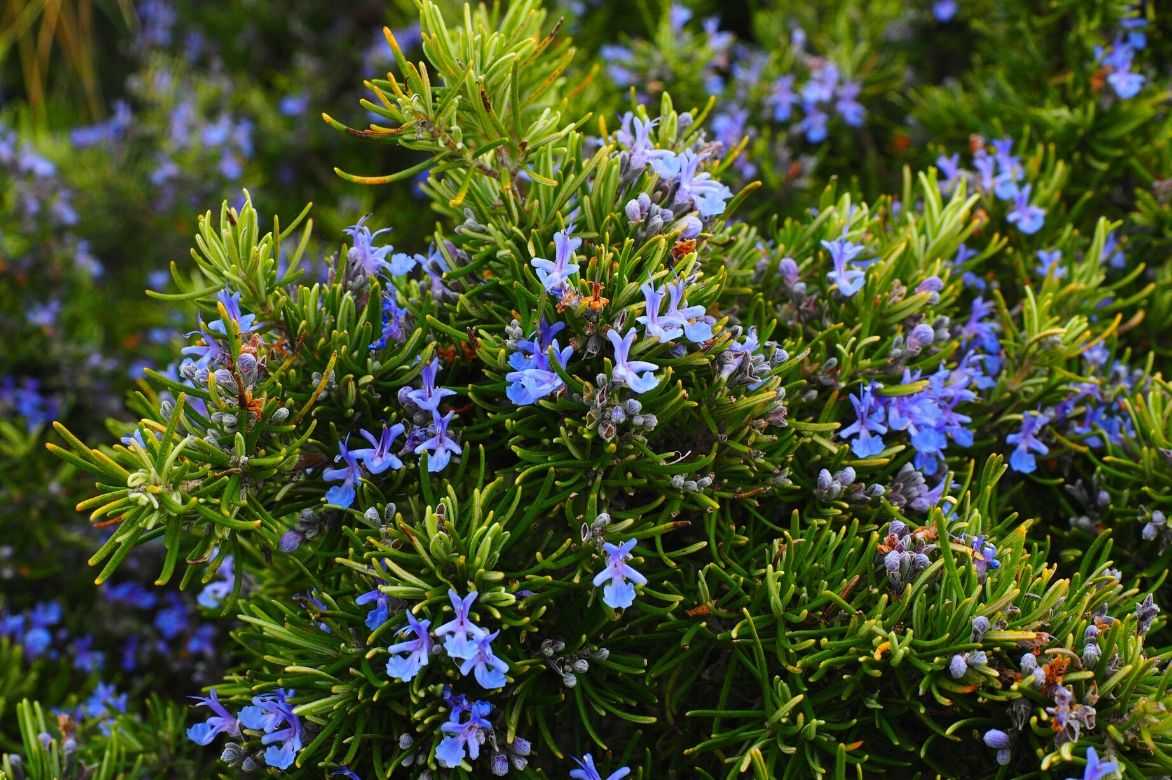
Rosemary in bloom
Main species and varieties
In pots or for sowing, you will find in our nursery the common rosemary and its many varieties, as well as trailing rosemary.
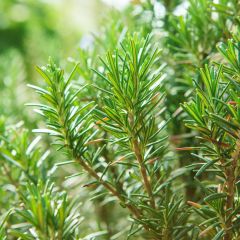
Rosmarinus officinalis
- Flowering time March to May
- Height at maturity 1 m
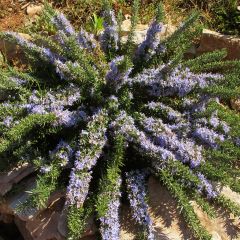
Creeping Rosemary - Rosmarinus officinalis Prostratus
- Flowering time April to December
- Height at maturity 30 cm
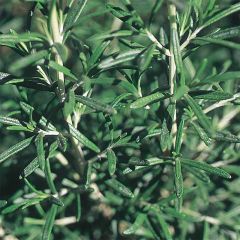
Rosmarinus officinalis - Organic Rosemary seeds
- Flowering time March to May
- Height at maturity 1 m
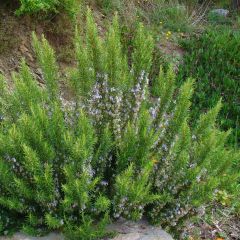
Rosmarinus officinalis - Rosemary
- Flowering time April to December
- Height at maturity 1,50 m
Discover other Rosemary
View all →Available in 0 sizes
Available in 3 sizes
Available in 3 sizes
Available in 1 sizes
Available in 1 sizes
Available in 2 sizes
Available in 2 sizes
Available in 1 sizes
Available in 1 sizes
Available in 1 sizes
Sowing and planting of Rosemary
Where to Plant and Sow?
Originating from the Mediterranean, rosemary has retained a fondness for warmth. It is well-suited to salt spray and drought. This is why it provides a suitable solution in Mediterranean zones, as well as in certain regions along the Atlantic coast. Hardy, it can withstand temperatures down to -15 to -20°C if the soil is well-drained and dry in winter, but it may start to suffer during a harsh winter at -10°C north of the Loire. The better the drainage, the more resilient rosemary is in winter.
It also thrives in very sandy soils that do not retain water. In regions that are too cold and humid, it is advisable to grow it in raised beds, sheltered by a south-facing wall, or in pots to winter indoors.
This plant prefers dry soils and sunny areas. Rosemary enjoys arid, well-draining, poor, and stony soils, even calcareous ones, where it develops more slowly but ages better. It requires very well-drained soil as it does not survive in heavy soils, especially in winter. The richer the soil, the faster rosemary grows, but it ages poorly, becomes less bushy, and will lose leaves from the base.
A good exposure to full sun will intensify its pungent fragrance.
Rosemary is a boon for quickly establishing the backdrop of a dry garden. With its aromatic evergreen leaves, it forms lush green clumps throughout the year in rockeries, small borders, low hedges, and dry banks. The creeping varieties will show their full vigour when planted above a low wall.
It is also useful for filling gaps in an arid bed and is naturally a reliable choice for vegetable gardens and herb squares, where its scent deters carrot flies, bean flies, and cabbage whites.
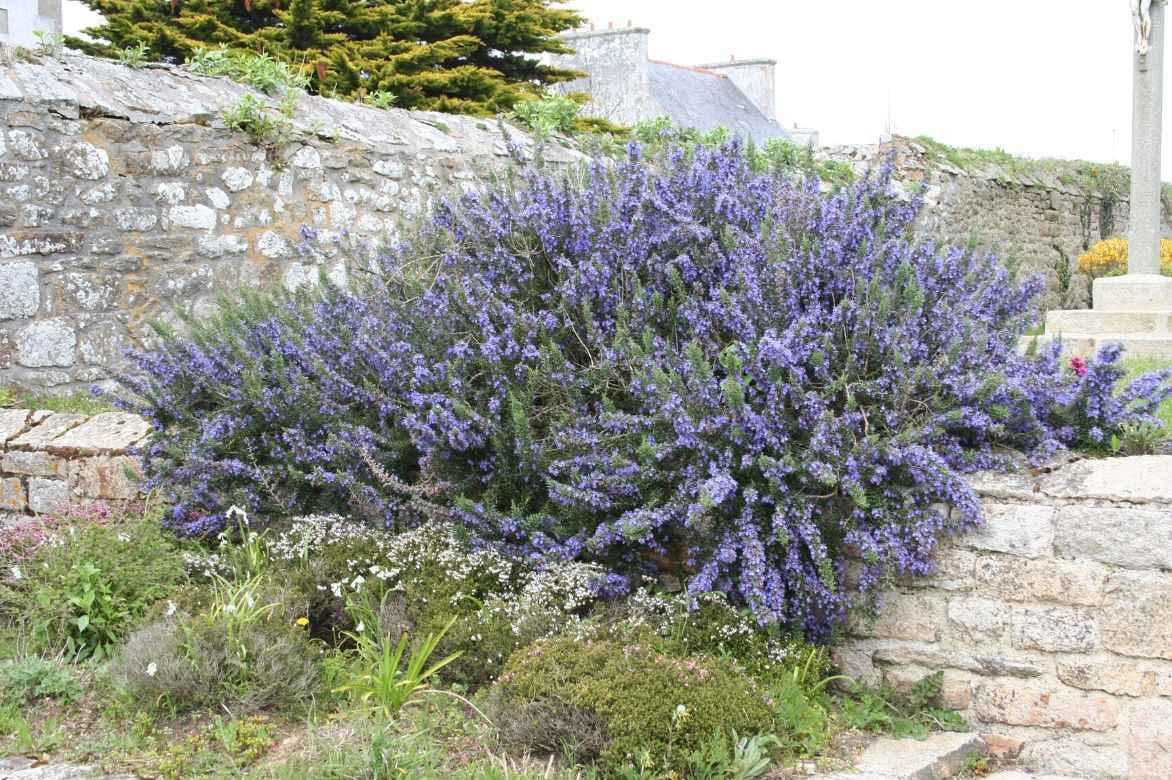 Rosemary thrives in dry gardens and in the sun!
Rosemary thrives in dry gardens and in the sun!
When to Plant and Sow?
Our rosemary plants in pots should be planted in spring, in March-April after the frosts, or in autumn from September to October. Sowing rosemary seeds should be done under cover (in a conservatory or cold greenhouse) from April to June for a harvest one year later.
How to Plant?
In the Ground
In heavy soil, incorporate gravel or coarse sand at the bottom of the planting hole. If your land is too wet, place your rosemary on a slope or in a raised rockery. One plant per square metre is sufficient. Also, avoid overly rich soils.
- Dig a hole 3 to 4 times wider than the root ball
- Spread a layer of gravel at the bottom of the hole
- Place the root ball in the centre of the planting hole, burying the collar well
- Fill in and lightly compact
- Water well at planting, then moderately without excess
Ensure successful planting of your rosemary by following our advice in our video “How to Plant a Bush”
Growing Rosemary in a Pot
For regions that are too humid, growing rosemary in a pot is recommended.
The substrate must be very well-draining to avoid stagnant moisture at the roots. Ensure drainage with gravel, coarse sand, or pebbles.
- In a large container of at least 30 cm in diameter, spread a good drainage layer
- Plant in a mix of garden soil or potting soil for Mediterranean plants and coarse river sand
- Water at planting, then without excess
- In cold regions, bring your rosemary indoors in winter and take it out in spring
⇒ Learn more: Growing Rosemary in a Pot
How to Sow Rosemary?
Sowing Under Cover
Rosemary seeds should be sown in a temperate environment (in a conservatory or cold greenhouse):
- In autumn, transplant into pots when the seedlings are 5 cm tall
- Water very moderately during winter
- Plant out in the following spring
→ Ensure success with your culinary seed sowing with our video tips!
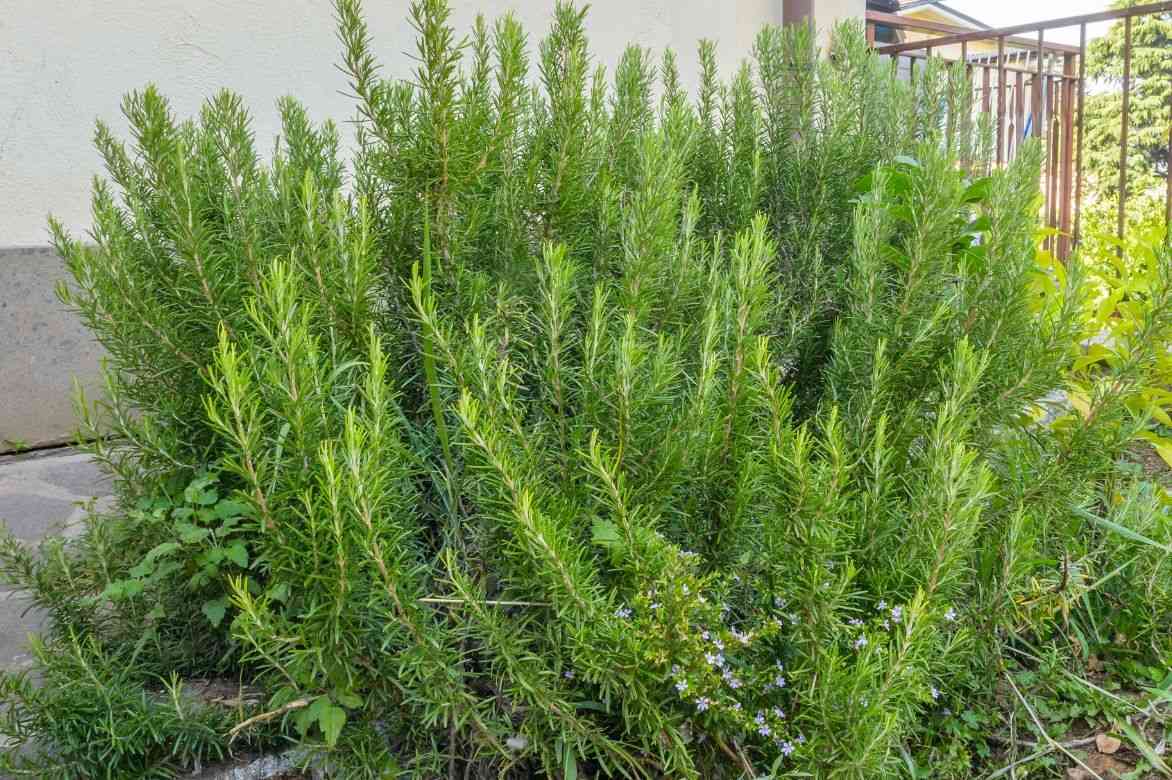
Read also
Sowing of aromatic plantsMaintenance, pruning and care
When grown under good conditions, rosemary is an undemanding and robust bush.
Characteristic of the Mediterranean climate, it withstands long dry summers perfectly and requires no watering once well-rooted. Water during the first summer following planting, then only in cases of prolonged drought and always without excess.
Carry out regular weeding and hoeing.
In pots, ensure more frequent watering while always allowing the substrate to dry well between waterings and avoiding water stagnation in the saucers. No fertiliser is recommended for this undemanding plant.
Mulch the base in the northern regions of the Loire with straw or dry leaves. In overly humid regions, opt for pot cultivation to be stored indoors in winter: keep the substrate almost dry during this period.
Follow our tips to protect your plants from the cold.
When and how to prune rosemary?
Pruning rosemary, while not necessary, can be useful for maintaining a bushy and ramified habit from the base or for shaping it into a ball. It can be done all year round, except during frost periods. It also prevents the formation of old wood and encourages vigorous regrowth. You can lightly shear the tips of the shoots after flowering: keep them for making cut flower arrangements or scented sachets to fragrance your linen. Pruning should only be done on this year’s wood, which is still green and tender with foliage: avoid pruning old branches that no longer have foliage, as rosemary never regrows on old wood.
→ Read also: How to prune rosemary on a stem?
Harvest, storage, use of rosemary
Harvest
Leaves of rosemary can be harvested all year round as needed by cutting the stems with a sharp pruning shear. Before the flowers appear, they will be more tender and much more fragrant. Flowers can be harvested from March-April and sometimes until autumn, depending on the climate.
Storage
Fresh rosemary stems can be stored for a week in the refrigerator wrapped in a damp paper towel or placed in a glass of water. Rosemary can also be dried: spread the stems on a rack or cloth in dry, warm weather in a dry, airy place away from direct sunlight. Once dry, store the leafy stems whole without crushing them, or remove the leaves from their stems and keep them in paper bags, jars, or airtight containers. They will last for at least 6 months.
→ Learn more in our advice sheet How to preserve and use rosemary?
Usage
With its highly aromatic foliage, much like thyme or mint, rosemary is widely used in cooking, either fresh or dried, to flavour grilled dishes, roasted meats, pizzas, focaccias, vegetables, sauces, or to enhance marinades, olive oil, fruit tarts, or even apricot or strawberry jams! It is one of the herbs that make up a bouquet garni. The flowers have a milder flavour and can be consumed fresh to flavour a salad or dessert.
It can be used in various ways: to prepare infusions, herbal teas, decoctions, or fumigations, or even as an essential oil on sugar, in baths, in friction lotions, ointments, gels… It is highly valued in herbalism, phytotherapy, and aromatherapy. The buds are also used in gemmotherapy. Rosemary is included in many woody perfumes. A highly fragrant honey can also be made from rosemary. A small sachet of rosemary placed in wardrobes will also deter moths.
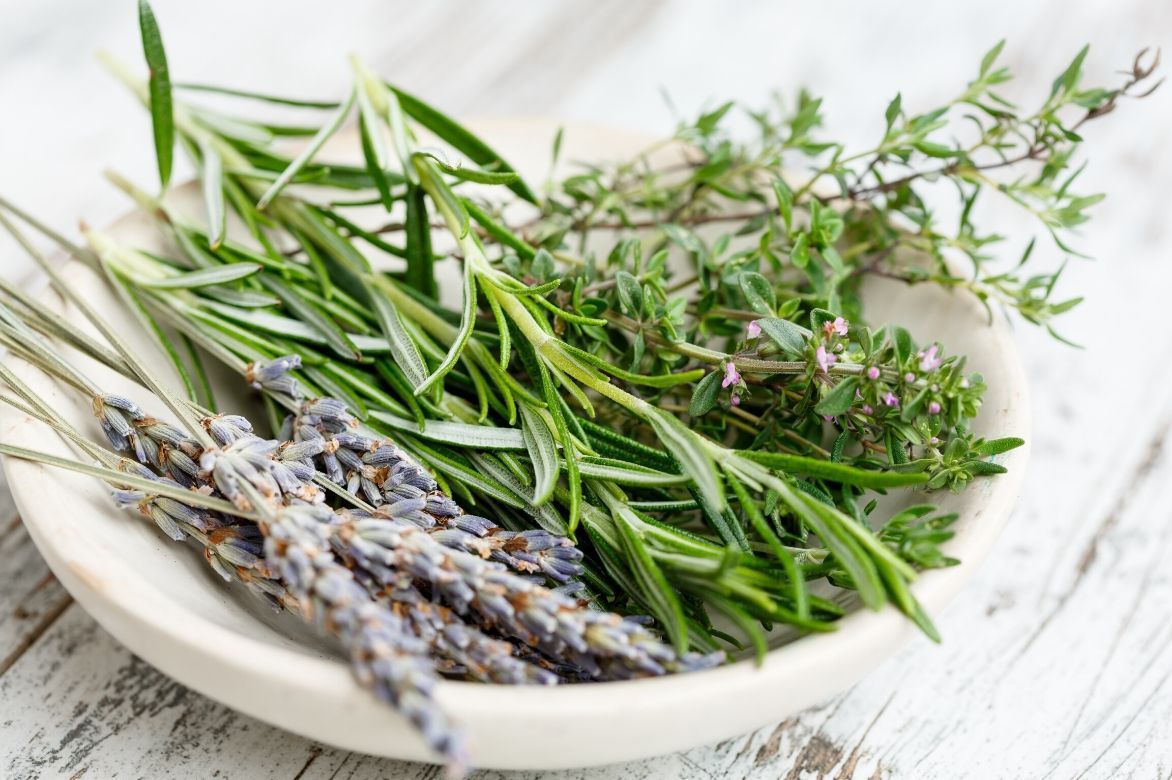
What are the benefits of rosemary?
Rosemary has been used since antiquity for its medicinal properties. It contains numerous active substances concentrated in the leaves and flowering tops, such as flavonoids, which are powerful antioxidants, and an essence rich in camphor, cineole, alpha-pinene, and borneol, as well as diterpenes known for their antimicrobial properties. Whether used internally or externally, it offers multiple benefits and is now recognised as a plant with beauty and health virtues. It aids digestion, decongests the liver, improves blood circulation, soothes respiratory infections, acts as a diuretic, alleviates rheumatism, and, thanks to its antioxidant properties, enhances memory and helps combat intellectual fatigue. It has been attributed with stimulating effects on brain activity since ancient Greece. It also possesses antiseptic qualities, making it a good plant for skin conditions.
Diseases and potential pests
Rosemary is resistant to diseases, however in overly moist soil it is susceptible to fungal diseases and particularly to Phytophthora, a fungus that attacks the collar of the plant.
The chrysomelids of rosemary are small beetles that leave their larvae and eggs on the foliage: harmless to the plant, you can however treat with horsetail decoctions. In the vegetable garden, rosemary is an excellent repellent plant that particularly deters cabbage white butterflies, carrot flies, beans, onions, not to mention snails and slugs.
Multiplication
The method for easily propagating rosemary is by taking cuttings in summer after flowering from new shoots. Creeping species tend to root naturally along the ground.
- Take lignified stems without flowers, approximately 10-15 cm long
- Remove the leaves from the lower half of the stems
- Replant each rosemary cutting in a tray or pots in a well-draining mix of river sand and potting soil
- Keep the substrate moist until rooting, which is very quick
- Protect your plants from frost in a temperate cold frame
- Plant out in the ground or in pots the following spring
- Water well at planting
→ Learn more with our tutorial When and how to take rosemary cuttings?
What to plant next to rosemary?
Rosemary is an essential shrub in dry gardens and coastal areas. It will easily find its place in a rockery or simply in a dry area alongside drought-resistant perennials and Mediterranean perennials reminiscent of garrigue. Even in winter, its glossy green foliage will stand out.
It will create lush and fragrant scenes with thyme, sage, cistus, santolina, helianthemum, wormwood, and sedum. In a sunny natural garden, it will blend into a border with dryland euphorbias.
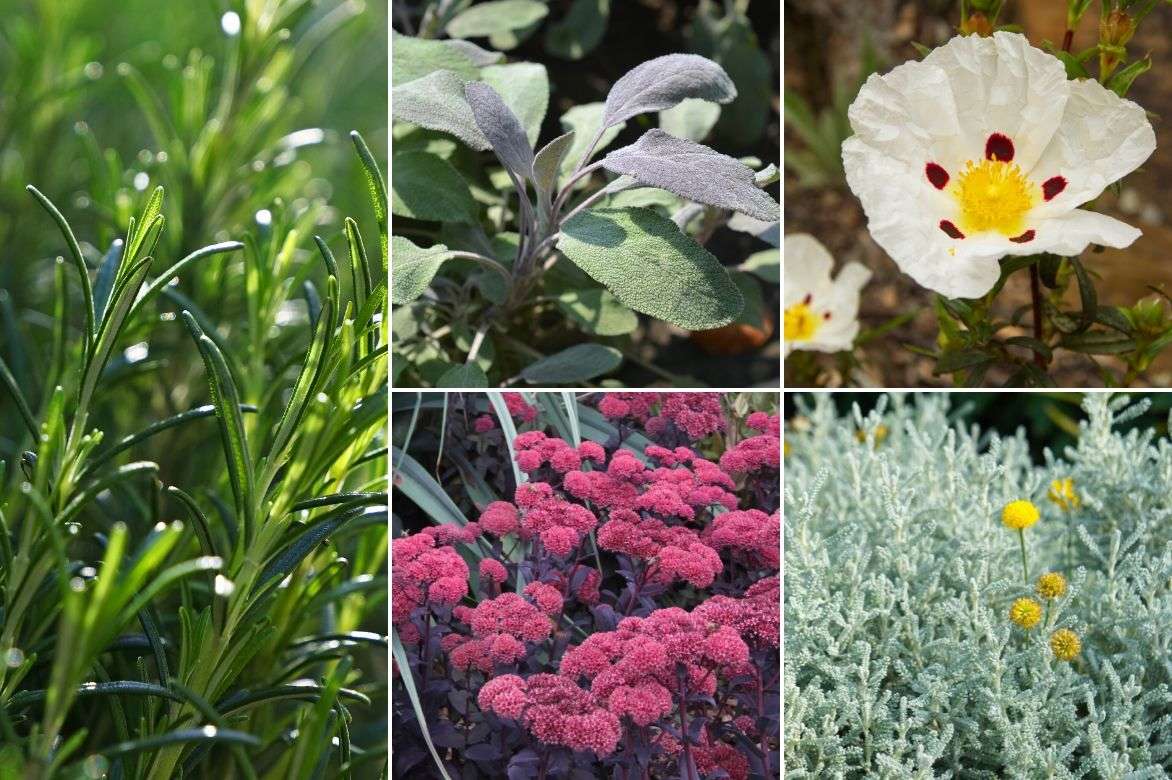
An example of association: Rosmarinus officinalis, Sage ‘Purpurascens’, Cistus, Sedum ‘José Aubergine’ and Santolina
In a dry rockery, accompany prostrate and creeping varieties of rosemary with other groundcover plants such as Juniperus horizontalis ‘Icee Blue’, Callirhoe involucrata, or Teucrium chamaedrys. It can also be planted in front of a low shrub border composed of lavender, groundcover roses, creeping ceanothus, and bush cinquefoil. It will also be a good plant to cover the base of Mediterranean shrubs such as oleander, broom, or a beautiful olive tree.
In a vegetable garden, it enjoys the company of carrots, cabbages, beans, and turnips. It does not get along well with cucumbers, gherkins, courgettes, or even potatoes and pumpkins.
Useful resources
-
- Find all our rosemary varieties.
- Our advice sheet: How to choose a rosemary plant?
- Rosemary on slopes: Rosemary: the best varieties for greening a slope. Also read How to plant on a slope.
- Discover our tips to prevent and treat rosemary diseases and pests
- Check out our recipe for homemade rosemary lemonade: a refreshing and natural drink
- Here’s a small selection of drought-resistant perennials, perfect for a garden without watering!
- What to plant in stony soil?
- Discover our selection of 15 medicinal plants with numerous benefits… to grow in your garden!
- Explore Elizabeth’s Mediterranean garden!
- Discover 9 creeping bushes
- Discover 8 aromatic plants for Mediterranean cuisine
- Subscribe!
- Contents
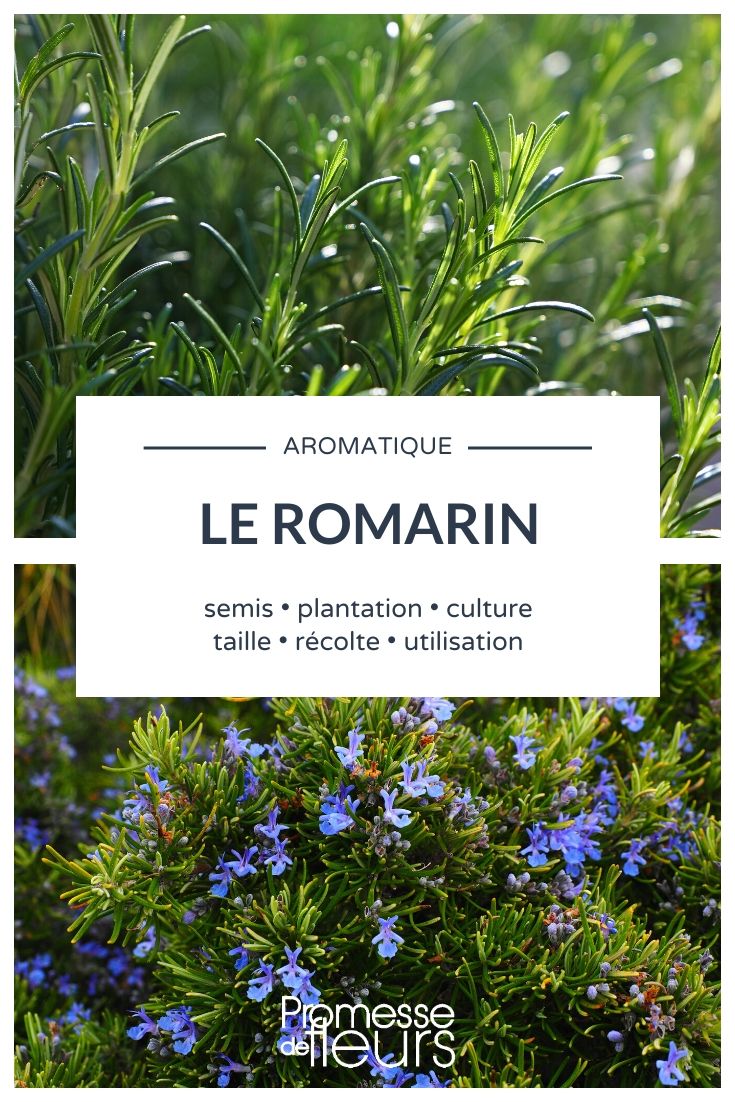































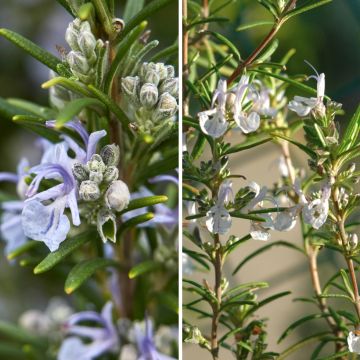


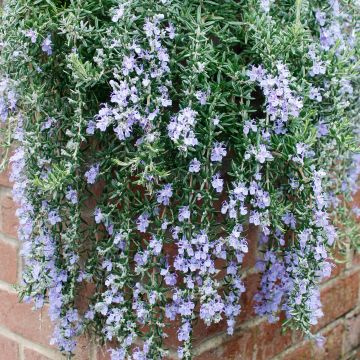
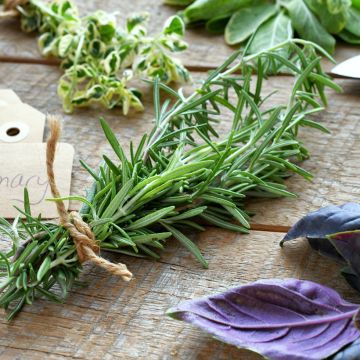
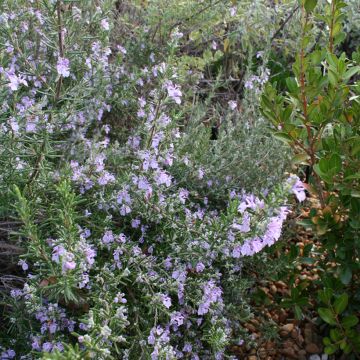
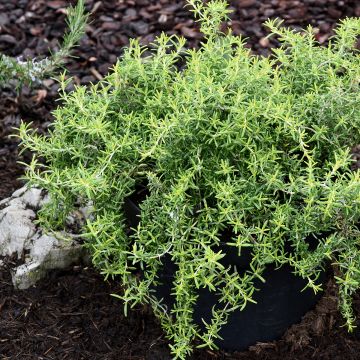
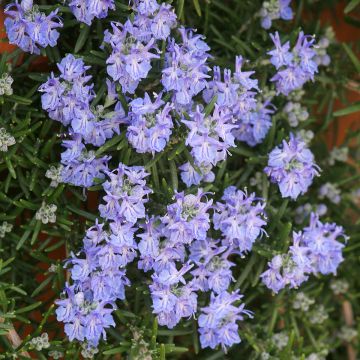
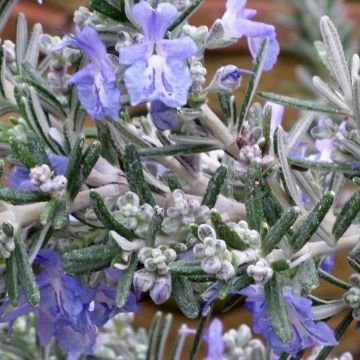
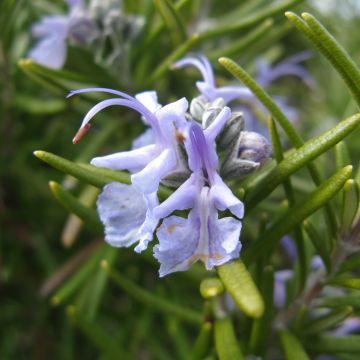
Comments